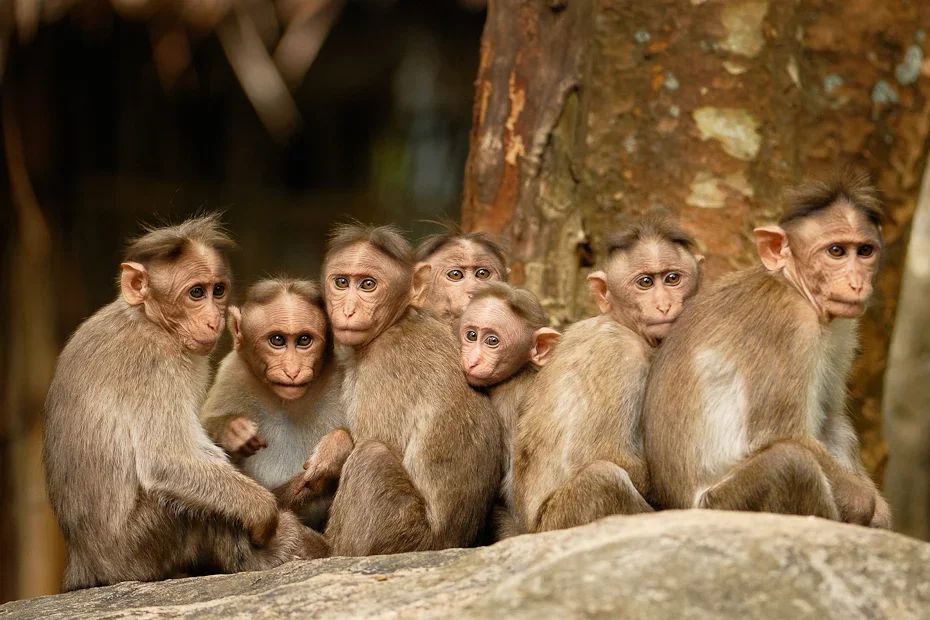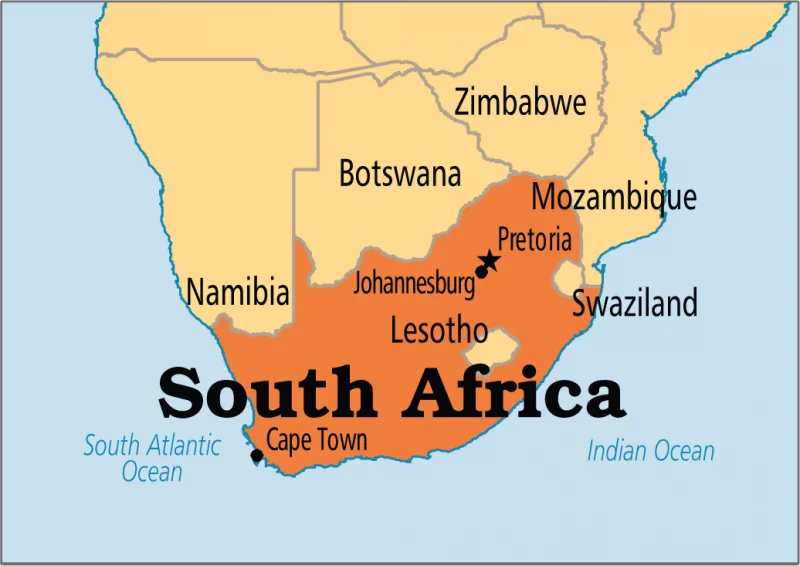International Relations
Securing the Indian Ocean Region
For Prelims: Parliamentary Standing Committee, Indian Ocean Region (IOR), String of Pearls, Horn of Africa, SAARC, BIMSTEC, Indian Ocean Rim Association (IORA), Indian National Centre for Ocean Information Services (INCOIS), Deep Ocean Mission, MAHASAGAR (Maritime Heads for Active Security And Growth for All in the Region), Colombo Security Conclave, NAVIC.
For Mains: Significance of the Indian Ocean Region for India, Challenges that India Encounter in the Indian Ocean due to Chinese presence in IOR, Steps needed by India to counter Chinese presence in IOR.
Why in News?
The report of the Parliamentary Standing Committee on External Affairs highlights that the growing presence of extra-regional players in the Indian Ocean Region (IOR), particularly China’s increasing foothold, poses a significant strategic challenge for India.
How is China Expanding Strategic Presence in the Indian Ocean Region?
- Dual-Use Infrastructure: China is investing in dual-use (civilian and military) infrastructure like ports, airports, and logistics hubs across IOR littoral states, forming a naval support network—examples include Hambantota (Sri Lanka, leased for 99 years), Gwadar (Pakistan, part of CPEC), and Chittagong (Bangladesh) & Kyaukpyu (Myanmar), near India’s maritime boundaries.
- China’s String of Pearls strategy envisions a naval logistics network that facilitates swift troop deployment in times of conflict.
- Military Expansion & Naval Deployment: China has significantly increased its naval presence in the IOR through the Djibouti Military Base (2017) enabling sustained naval operations along with increased warship deployments including submarines.
- It also sends “scientific” research vessels (e.g., Xiang Yang Hong 3) for oceanographic surveys, aiding submarine operations and maritime domain awareness.
- Debt-Trap Diplomacy: China’s Belt and Road Initiative (BRI) projects often involve unsustainable loans, creating debt traps—as seen in Sri Lanka’s Hambantota Port crisis and the Maldives’ infrastructure loans, increasing dependence on Beijing.
- By leveraging economic vulnerabilities, China pressures IOR nations to align with its strategic interests, often at the cost of regional stability.
- Diplomatic & Security Partnerships: China conducts joint naval exercises with Pakistan, Bangladesh, Myanmar, Iran, and Russia, strengthening its maritime military ties. Politically, it backs pro-China leaders, such as the Maldives’ President Muizzu, to expand its influence in the region.
- Additionally, the launch of the “China-Indian Ocean Region Forum” highlights Beijing’s growing strategic and economic interests in the region.
China’s “String of Pearls” Strategy
- The String of Pearls is a geopolitical theory that refers to China's increasing efforts to develop and expand its ports and naval bases throughout the Indian Ocean Region, from the Strait of Malacca to the Horn of Africa.
- The theory suggests that China is seeking to establish a series of strategic naval bases and commercial ports along key sea-lanes in the Indian Ocean, to protect its vital energy imports and enhance its maritime influence.
- These "pearls" include ports such as Gwadar in Pakistan, Hambantota in Sri Lanka, and Djibouti in Africa, which provide China with greater access and influence in the region.
How China's Presence in the Indian Ocean Region Threatens India's Interest in Region?
- Military and Security Threats: China’s strategic ports—Gwadar, Hambantota, Djibouti, and Coco Islands—enable the Chinese Navy to deploy warships, monitor Indian naval activity, and potentially blockade key sea lanes like the Malacca Strait and Strait of Hormuz.
- Economic and Strategic Threats: With 80% of India’s oil imports passing through the IOR, China could disrupt trade routes during conflict, threatening India’s energy security.
- Through Chinese debt-trap diplomacy, India risks losing traditional allies, diplomatic leverage in SAARC and BIMSTEC, and faces increased Chinese naval access near its shores via client states.
- Intelligence & Surveillance Threats: Chinese spy ships like Xiang Yang Hong 03 and electronic surveillance bases in Gwadar enhance China’s monitoring of Indian naval activity, while suspected undersea sensor networks aid submarine detection.
- This poses a threat to India’s naval secrecy and undermines its nuclear deterrent, especially the operations of Arihant-class SSBNs ("Ship, Submersible, Ballistic, Nuclear).
- Diplomatic & Geopolitical Threats: China’s expanding influence in Nepal, Maldives, and Bangladesh, combined with military partnerships like China-Pakistan naval drills and China-Iran-Russia cooperation, threatens to isolate India in its own neighborhood, weaken its strategic autonomy, and heighten reliance on the US and Quad for regional balance.
- Threat to Indo-Pacific Stability: China’s military expansion in the IOR is part of a broader strategy to dominate the Indo-Pacific.
- This upsets the strategic balance and may provoke military confrontations involving extra-regional players like the US, Japan, and Australia—putting India in a volatile environment
What is the Significance of the Indian Ocean Region for India?
- Strategic Maritime Security: India sees itself as a net security provider, reflected in the launch of INS Vikrant (2022) and 17 multilateral & 20 bilateral naval exercises annually.
- The Information Fusion Centre – Indian Ocean Region (IFC-IOR, 2018) enhances maritime domain awareness and coordination.
- Economic Lifeline: 80% of India’s external trade and 90% of energy trade pass through the Indian Ocean. These routes handle 70% of global container traffic.
- Ports like Vizhinjam (Kerala) aim to boost transshipment share. The Blue Economy is expected to contribute 4% to GDP.
- Geopolitical Influence: The ocean is central to countering China’s “String of Pearls” strategy, prompting India to deepen ties with Seychelles, Mauritius, and the Maldives.
- Through initiatives like “Act East”, “Neighbourhood First”, and active participation in Indian Ocean Rim Association (IORA), India is enhancing maritime connectivity and regional influence.
- Environmental and Disaster Management: India’s 11,098 km coastline faces threats from sea-level rise and extreme weather, with the Indian National Centre for Ocean Information Services (INCOIS) providing vital monitoring and early warning.
- India’s leadership in the Coalition for Disaster Resilient Infrastructure (CDRI) and humanitarian aid, such as to Mozambique after Cyclone Idai (2019), strengthens its soft power.
- Scientific Research and Exploration: The Indian Ocean supports India’s technological advancement through initiatives like the Deep Ocean Mission, featuring Matsya 6000, a manned submersible for deep-sea exploration.
- India's polymetallic nodule exploration in the Central Indian Ocean Basin (75,000 sq km) positions it as a pioneer in deep-sea mining.
How India Can Strengthen its Presence in the IOR and Counter China’s Expansion?
- Military & Security Measures: India should enhance naval capabilities by expanding its submarine fleet, advancing the aircraft carrier program (at least 3), strengthening anti-submarine warfare (ASW) systems and deploying undersea surveillance networks.
- The Andaman & Nicobar Command (ANC) must be upgraded with naval/air bases, missile systems, electronic warfare assets, and regular exercises with QUAD and ASEAN.
- Economic & Infrastructure Countermeasures: India should promote its MAHASAGAR (Maritime Heads for Active Security And Growth for All in the Region) policy by positioning the India-Middle East-Europe Economic Corridor (IMEC) as a BRI alternative, and investing in regional ports like Chabahar (Iran), Sabang (Indonesia), and Duqm (Oman).
- Offering grants and soft loans, India can reduce IOR nations’ dependence on China, while supporting infrastructure projects in Sri Lanka, Maldives, and Bangladesh.
- Diplomatic & Strategic Alliances: India should strengthen QUAD by expanding its maritime security role and deepen defense ties with the US, Japan, Australia, and France for technology sharing.
- It must revitalize regional groupings like the IORA for collective security and leverage Colombo Security Conclave for counterterrorism and maritime cooperation.
- Technological Enhancements: India should expand NAVIC coverage and deploy additional reconnaissance satellites to enhance maritime domain awareness and monitor Chinese naval movements.
- It must also develop AI-driven maritime tracking systems and strengthen cybersecurity to counter Chinese cyber-espionage targeting ports and naval bases.
- Soft Power & Cultural Diplomacy: India should strengthen historical and cultural ties in the IOR by reviving ancient maritime routes, promoting Buddhism, expanding education and skill development, and lead in Humanitarian Assistance and Disaster Relief (HADR) efforts through rapid-response naval teams for tsunamis, cyclones, and other disasters to enhance regional goodwill.
Conclusion
China’s expanding IOR presence threatens India’s security, economy, and regional influence. To counter this, India must bolster naval capabilities, offer economic alternatives to BRI, strengthen alliances like QUAD, enhance surveillance, and leverage soft power. A proactive, multi-dimensional strategy is essential to safeguard India’s maritime interests and maintain regional stability.
|
Drishti Mains Question: How does China’s growing influence in the Indian Ocean Region (IOR) pose a strategic challenge for India? What steps India can take to counter China’s growing influence in IOR? |
UPSC Civil Services Examination, Previous Year Question (PYQ)
Prelims
Q. With reference to ‘Indian Ocean Rim Association for Regional Cooperation (IOR-ARC)’, consider the following statements: (2015)
- It was established very recently in response to incidents of piracy and accidents of oil spills.
- It is an alliance meant for maritime security only.
Which of the statements given above is/ are correct?
(a) 1 only
(b) 2 only
(c) Both 1 and 2
(d) Neither 1 nor 2
Ans: (d)
Mains
Q. Discuss the geopolitical and geostrategic importance of Maldives for India with a focus on global trade and energy flows. Further also discuss how this relationship affects India’s maritime security and regional stability amidst international competition? (2024)
Q. What is the significance of Indo-US defense deals over Indo-Russian defense deals? Discuss with reference to stability in the Indo-Pacific region. (2020)


Important Facts For Prelims
19th Statistics Day and Contribution of PC Mahalanobis
Why in News?
The 19th Statistics Day was celebrated on 29th June, marking the 132nd birth anniversary of Prasanta Chandra Mahalanobis, with the theme ‘75 Years of National Sample Survey’, highlighting NSS's key role in strengthening India’s statistical system.
- To commemorate 75 years of NSS, the government launched the GoIStat app, conferred the 2025 Prof. C.R. Rao Award to Dr Prajamitra Bhuyan for excellence in statistics, and released the SDG National Indicator Framework Progress Report, 2025.
What is National Statistics Day and Contribution of PC Mahalanobis?
- About National Statistics Day: Initiated by the Government of India in 2007, National Statistics Day is observed on June 29 to honour Prasanta Chandra Mahalanobis and raise awareness about the role of statistics in policy-making, development, and governance.
- About PC Mahalanobis: PC Mahalanobis (1893–1972) was an eminent Indian scientist and statistician, born in Calcutta (present-day Kolkata). His key contributions are:
- Mahalanobis Distance: It is a way to measure how far a point is from the average in multi-dimensional data.
- E.g., in face recognition, it helps check if a new face matches a known person by seeing how far it is from the average face.
- Indian Statistical Institute: Established in 1931 in Kolkata, it became a global hub for statistics, economics, and data science.
- He also founded Sankhya, the first Indian statistical journal, in 1933.
- Second Five-Year Plan (1956–61): In 1955, PC Mahalanobis was appointed to the Planning Commission by Prime Minister Nehru and advised on industrialization, emphasizing heavy industries through the Mahalanobis Model.
- National Sample Survey: It was launched in 1950 based on the recommendation of Professor P. C. Mahalanobis, then Statistical Adviser to the Cabinet.
- Feldman-Mahalanobis Model: An economic growth strategy adopted by developing nations. It prioritises investment in heavy industries (like steel, machinery, and capital goods) to create a strong industrial base for long-term self-reliance.
- Mahalanobis Distance: It is a way to measure how far a point is from the average in multi-dimensional data.
- About National Sample Survey: Since 1950, the former National Sample Survey Organisation (now National Statistical Office) has conducted large-scale sample surveys across India, typically in year-long rounds.
- It collects data through nationwide household surveys, the Annual Survey of Industries (ASI), rural and urban prices, and supports crop statistics by supervising area and crop estimation surveys.
- It also maintains a sampling frame for urban surveys.
- About MoSPI: The Ministry of Statistics and Programme Implementation (MoSPI) was established as an independent ministry on 15th October 1999, following the merger of the Department of Statistics and the Department of Programme Implementation. The Ministry has two wings, namely, Statistics and Programme Implementation.
- The Statistics Wing, known as the National Statistical Office (NSO), includes the Central Statistics Office (CSO) and National Sample Survey Office (NSSO).
- The Programme Implementation (PI) Wing consists of three divisions i.e., Central Twenty Point Programme (TPP), Infrastructure and Project Monitoring (IPM), and Members of Parliament Local Area Development Scheme (MPLADS).
- Additionally, the ministry oversees the National Statistical Commission (NSC), established by a Government Resolution, and an autonomous institute—Indian Statistical Institute (ISI)—declared an Institute of National Importance by an Act of Parliament.
UPSC Civil Services Examination, Previous Year Questions (PYQs)
Q. With reference to India’s Five-Year Plans, which of the following statements is/are correct? (2019)
- From the Second Five-Year Plan, there was a determined thrust towards substitution of basic and capital good industries.
- The Fourth Five-Year Plan adopted the objective of correcting the earlier trend of increased concentration of wealth and economic power.
- In the Fifth Five-Year Plan, for the first time, the financial sector was included as an integral part of the Plan.
Select the correct answer using the code given below:
(a) 1 and 2 only
(b) 2 only
(c) 3 only
(d) 1, 2 and 3
Ans: (a)
Q. In the context of India’s Five-Year Plans, a shift in the pattern of industrialization, with lower emphasis on heavy industries and more on infrastructure begins in (2010)
(a) Fourth Plan
(b) Sixth Plan
(c) Eighth Plan
(d) Tenth Plan
Ans: (b)


Important Facts For Prelims
Biopesticide for Cardamom Thrips
Why in News?
The ICAR-Indian Institute of Spices Research (ICAR-IISR), Kozhikode, has developed an eco-friendly biopesticide using the entomopathogenic fungus Lecanicillium psalliotae to effectively control cardamom thrips, a major pest affecting cardamom plantations.
What is Lecanicillium psalliotae-Based Biopesticide?
- About: A granular biopesticide has been developed using Lecanicillium psalliotae, a naturally occurring entomopathogenic fungus isolated from cardamom thrips (Sciothrips cardamomi).
- It infects pests by penetrating their outer layer and feeding internally, effectively targeting larvae, pupae, and adults. It acts on contact and belongs to the same group as Beauveria bassiana and Metarhizium anisopliae, widely used in biological pest control.
- Application and Benefits: The biopesticide is mixed with farmyard manure (FYM) and applied 3–4 times to plant basins.
- It is cost-effective, reduces chemical pesticide dependence, and promotes root growth and soil nutrient availability.
- Significance: It is eco-friendly and non-toxic, reducing environmental impact and health risks. It supports Integrated Pest Management (IPM) strategies, promotes sustainable agriculture, and ensures compliance with international residue standards in export-oriented crops like cardamom.
Note:
- Granular biopesticides are formulations in which the active ingredient, typically derived from natural sources such as microorganisms or plants, is embedded in or coated onto solid granules for easy application and controlled release.
What are the Key Facts Related to Cardamom?
- About: Cardamom (Elettaria cardamomum), popularly called the “Queen of Spices”, is a highly aromatic spice from the Zingiberaceae (ginger) family.
- It is indigenous to the evergreen rainforests of the Western Ghats.
- Climatic Conditions: Requires 1500-4000 mm of rainfall, temperatures between 10°C to 35°C, and thrives at altitudes of 600–1500 meters.
- Grows well in acidic, loamy, humus-rich soils with a pH of 5.0–6.5.
- Production: As of 2025, the top cardamom-producing countries are Guatemala (1st), India (2nd), and Sri Lanka (3rd).
- Kerala contributes 58% of India’s cardamom production along with Karnataka and Tamil Nadu as other major cultivating states.
- Newly Identified Species: Elettaria facifera (Periyar Tiger Reserve, Idukki) and Elettaria tulipifera (Agasthyamalai hills, Thiruvananthapuram and Munnar, Idukki).
UPSC Civil Services Examination, Previous Year Questions (PYQs)
Q. Lichens, which are capable of initiating ecological succession even on a bare rock, are actually a symbiotic association of (2014)
(a) algae and bacteria
(b) algae and fungi
(c) bacteria and fungi
(d) fungi and mosses
Ans: (b)
Q. Consider the following organisms: (2013)
- Agaricus
- Nostoc
- Spirogyra
Which of the above is/are used as biofertilizer/biofertilizers?
(a) 1 and 2
(b) 2 only
(c) 2 and 3
(d) 3 only
Ans: (b)


Rapid Fire
Kolhapuri Chappals
Italian luxury fashion brand Prada has acknowledged that its men’s footwear design was inspired by traditional Indian handcrafted footwear, after facing backlash for the sandals’ strong resemblance to GI-tagged Kolhapuri chappals, which artisans argue constitutes cultural appropriation and a violation of the GI tag.
- Cultural appropriation in fashion is when designers use elements from another culture without credit or claiming they didn't know the origin.
Kolhapuri Chappals
- Origin & Geography: It is handcrafted in Kolhapur (Maharashtra) and nearby districts like Sangli, Satara, and Solapur, dating back to the 12th–13th century, and was originally made for royalty.
- Craftsmanship: It is made using vegetable-tanned leather from cow, buffalo, or goat, and is fully handmade without nails or synthetic components
- Design Features: It is recognised for its T-strap shape, detailed braiding, and open-toe design, mostly in tan or deep brown shades.
- GI Tag Recognition: It was granted Geographical Indication (GI) status in 2019, covering eight districts in Maharashtra and Karnataka.
GI Tag
- A GI tag identifies products with a specific geographical origin and ensures only authorised users from that region can use the name.
- It protects against imitation, is valid for 10 years, and is overseen by the Department for Promotion of Industry and Internal Trade (DPIIT), Ministry of Commerce and Industry.
| Read More: Intellectual Property Rights |


Rapid Fire
Bonnet Macaque
Kerala is considering mass sterilisation of Bonnet Macaques (Macaca radiata), a widespread primate species, to manage their rising population and minimise human-wildlife conflicts.
Bonnet Macaques
- About: It is an Old-World monkey native to the Oriental region, especially southern India, and is known for the bonnet-like whorl of hair on its head.
- It inhabits evergreen and dry deciduous forests of the Western Ghats and also thrives in urban, suburban, and agricultural areas.
- Reproduction and Lifespan: They live in multi-male, multi-female groups. Females mature by 3 years, give birth at 4, with a gestation of around 24 weeks, and infants nurse for 6–7 months, staying close to their mothers for about a year.
- Behavior: They are arboreal (spend most of their time in trees) and terrestrial quadrupeds (walks on four limbs), active during the day and living in troops of around 30.
- Communication: They use visual (grinning, clicking), tactile, and vocal communication, including alarm calls to signal predators.
- They can also recognize alarm calls of sympatric primates like Hanuman langurs and lion-tailed macaques.
- Conservation Status:
- Wildlife Protection Act, 1972: Schedule I.
- IUCN: Vulnerable
- Feeding Habits: They are omnivorous, feeding on fruits, leaves, insects, bird eggs, and lizards. Near human settlements, they often raid food offerings, trash, and gardens.
| Read More: World Monkey Day |


Rapid Fire
India–South Africa Submarine Cooperation Agreements
India and South Africa signed two agreements on submarine cooperation during the 9th Joint Defence Committee (JDC) meeting held in Johannesburg.
India-South Africa Joint Defence Committee (JDC)
- These are bilateral institutional mechanisms established under the 2000 MoU on Defence Cooperation to strengthen defence ties.
- Relations are rooted in a shared anti-colonial struggle, with formal defence cooperation beginning in 1996 through an MoU on Defence Equipment.
- Co-chaired by the Defence Secretaries of both countries, the JDC serves as a high-level platform to review ongoing collaboration and identify new areas of mutual interest, including defence policy, military training, defence production, and research.
- It also oversees two sub-committees on defence cooperation and acquisitions, while facilitating structured dialogue, maritime security, and India's strategic outreach to Africa.
South Africa
- It is the southernmost country of Africa, bordering Namibia, Botswana, Zimbabwe (North), Mozambique, Eswatini (Northeast & East), and Lesotho (enclave).
- It has 3 capitals: Pretoria (Executive), Cape Town (Legislative), Bloemfontein (Judicial).
- South Africa shares maritime boundaries with the Indian and Atlantic Oceans.
- Major physical features include the Drakensberg Mountains, Limpopo and Orange rivers, and landforms like the Highveld (grassland plateau), Bushveld (tree-dotted plains), and the Great Escarpment (mountainous rim).
India’s Initiatives to Support Africa
- Infrastructure & Training Support: Set up Rural Technology Parks, Food Testing Labs, Vocational Training Centres; provided training in crop processing, composting, irrigation, and mechanisation.
- Trilateral Cooperation: Partnered with FAO, USAID, and SITA (Supporting India’s Trade Preferences for Africa) to deploy agri-experts and support food security and irrigation planning in African nations.
- 3A Framework: Promotes Affordable, Appropriate, Adaptable agricultural technologies tailored to Africa’s local conditions.
| Read More: Evolving India-Africa Partnership |


Rapid Fire
CRISPR Technology for Climate-Resilient Crops
Scientists from the Bose Institute, under the Department of Science and Technology (DST), have developed a novel CR-9ISPR-dCas9-based molecular tool that enhances plant resistance to heat stress and pathogen attacks.
CRISPR-dCas9-Based Molecular Tool
- CRISPR-dCas9: It is a modified version of the CRISPR-Cas9 gene-editing tool. In this version, the Cas9 protein is made inactive, meaning it can no longer cut DNA. However, it still uses a guide RNA (gRNA) to find and attach to specific DNA sequences.
- While regular CRISPR-Cas9 works by cutting DNA to make changes in the gene, CRISPR-dCas9 does not cut the DNA. Instead, it acts like a gene switch by turning specific genes on or off without changing the DNA itself.
- This makes it useful for safely controlling when certain genes, like stress-response genes in plants, are activated, only when needed, saving energy and improving efficiency.
- CRISPR (Clustered Regularly Interspaced Short Palindromic Repeats) is a gene-editing technology that uses the Cas9 protein and a guide RNA (gRNA) to act as genetic scissors, enabling precise cutting, removal, addition, or alteration of DNA sequences in living organisms.
- Working Mechanism: Plants often face stress due to extreme weather or pathogen attacks, which reduces their productivity and growth.
- CRISPR-dCas9 helps plants respond only when under stress using a transmembrane (TM) domain from a tomato protein (NACMTF3) to keep a modified protein, dCas9, outside the nucleus under normal conditions.
- During stress (like heat or pathogen attack), the TM domain releases dCas9, which then enters the nucleus and activates specific defense genes.
- Under pathogen attack (e.g., Pseudomonas syringae), it activates CBP60g and SARD1 immune response genes, boosting immune responses, and under heat stress, it activates NAC2 and HSFA6b, improving water retention, leaf greenness, and thermotolerance.
- Application: Tested on tomato, potato, and tobacco, it showed the highest effectiveness in tomato plants.
| Read More: First Successful Use of Customised Base Editing |













